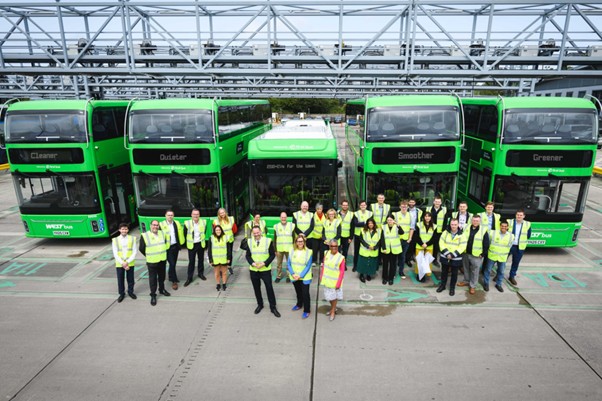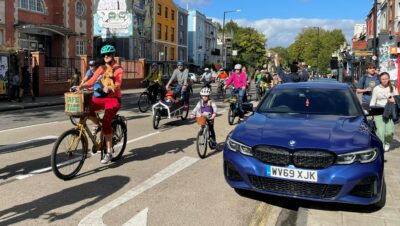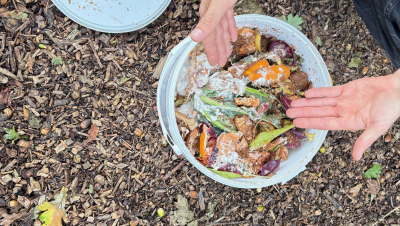Features / Transport
Are Bristol’s new electric buses really better for the environment?
On June 3, in a big step forward for Bristol City Council’s One City Climate Strategy, an electrified bus depot opened in Hengrove in the south of Bristol.
74 brand new electric buses joined Bristol’s streets thanks to a £37.4m investment from First Bus and an additional £6.6m from the government.
With these electric buses now travelling on our roads, this is just the beginning of First Bus’s commitment to have a fully Net Zero fleet by 2035.
is needed now More than ever
Doug Claringbold, managing director for First Bus in the West of England, said that with “four of our five depots fully electrified, we’re not only cutting carbon emissions, we’re delivering cleaner air, quieter streets, and a better experience for about three quarters of a million passengers”.

The transport sector accounts for 24 per cent of the total pollutants in the atmosphere. Transport accounts for 34 per cent of an average Bristol resident’s carbon footprint.
Vehicles on the roads not only release gases which are harmful to the planet, but breathing tailpipe emissions can lead to asthma and damage to human and animal lungs, heart and brains.
Each electric bus is estimated to save 75 tonnes of CO2 per year, equivalent to taking 54 cars off the road.
While these new electric buses will not release harmful gases, it is important to look at how they are manufactured and where the electricity to power the charging stations is coming from.
Faizan Ahmad, the Decarbonisation Programme director at First Bus, told me “all of the electricity for the charging stations is backed by a Renewable Energy Guarantee of Origin (REGO),” meaning they have a certificate which states the electricity used in the depot is renewably sourced.
Considering the long-term impact of the buses and their manufacture, the new buses will be effective for longer as they have a lifespan beyond the 15 years of original diesel buses, according to Ahmad.
While the purchase of these buses is more expensive outright, First Bus is working to repower the existing diesel buses which is cheaper than purchasing a new electric bus.

The buses are on the road; the next step is to encourage residents to use them… – photo: Freia Turland
First Bus are using a variety of incentives to encourage Bristol residents to take these buses.
This summer the ‘Kids Go Free’ initiative was used for more than 500,000 free bus journeys in the first four weeks of the scheme.
But Bristol residents know that public transport is not where we shine. Buses come and go, not always sticking to their allocated timetable. You could wait two minutes or 25 minutes for a bus.
I talked with a Long Ashton resident who told me she would rather use her car than the buses, even if the bus is electric and better for the environment.
Long Ashton is that mysterious place across the Clifton Suspension Bridge; crossing the bridge, you can reach Clifton Village in ten minutes and the city centre in another ten to 15 minutes.
However, this young graduate told me that she is glad to have her car because the buses “from my village take around 40 minutes to the city centre. It’s a real relief to have my car, as it cuts the journey time in half at the very least.”
In order to encourage residents to ditch their personal vehicles, the buses need to better respond to the needs of residents.
And that is exactly what the West of England Combined Authority (WECA) has announced they are doing by adding more buses and extending routes and operating hours.
WECA is bringing back formerly discontinued routes like the 512 from south Bristol to Broadmead, and extending service hours to between midnight and 6am at weekends to a range of routes.

Residents say they will continue to use their cars despite knowing this is more polluting for the environment, while First and WECA are making efforts to improve services – photo: Martin Booth
So what does this all mean?
Overall, yes, these buses are better for the environment. The energy used to charge them is renewable and the REGO certificates ensure that it is.
The buses themselves will not spew out toxic tailpipe emissions. In 15 years, they will not need to be replaced, avoiding the use of additional materials and energy, which might or might not be renewable, to make them again.
But the question remains: will residents choose the buses over their personal vehicles?
This is one of the key things that needs to happen in order for the buses to truly be better for the environment and reduce Bristol’s carbon footprint.
Main image: Rhiannon Lodato
This piece was produced by Manon Lamy as part of Bristol24/7’s Youth Climate Reporter scheme which seeks to amplify underrepresented voices and broaden the range of perspectives and stories we tell on environment issues.
The scheme is funded by Bristol City Council and our public and Better Business members.
Read next:
 Our newsletters emailed directly to you
Our newsletters emailed directly to you




















